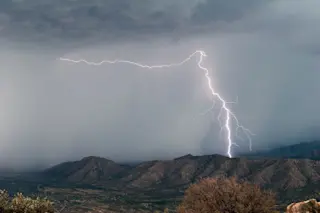(Credit: Shutterstock) In the skies above Japan, scientists have detected lightning triggering nuclear reactions. These new findings are clear evidence that thunderstorms are a natural source of radioactive isotopes on Earth. Thunderstorms are natural particle accelerators, capable of hurling electrons outward at nearly the speed of light. When these electrons strike atoms, they can generate gamma rays, the highest-energy form of light. Previous research suggested that gamma rays from lightning can have a variety of extraordinary effects, such as creating matter and antimatter. As Einstein's famous equation (E=mc²) proved, mass can get converted into energy and vice versa. Prior work found that gamma rays from lightning can generate pairs of electrons and their positively charged antimatter counterparts, known as positrons. If any of these positrons smack into electrons, they will mutually annihilate each other, emitting gamma rays. Scientists had also conjectured that gamma rays from lightning could trigger "photonuclear" reactions ...
Storms Generate Thunder, Lightning and...Antimatter?
Scientists find gamma rays from lightning can trigger nuclear reactions, producing radioactive isotopes in Earth's atmosphere.
More on Discover
Stay Curious
SubscribeTo The Magazine
Save up to 40% off the cover price when you subscribe to Discover magazine.
Subscribe













